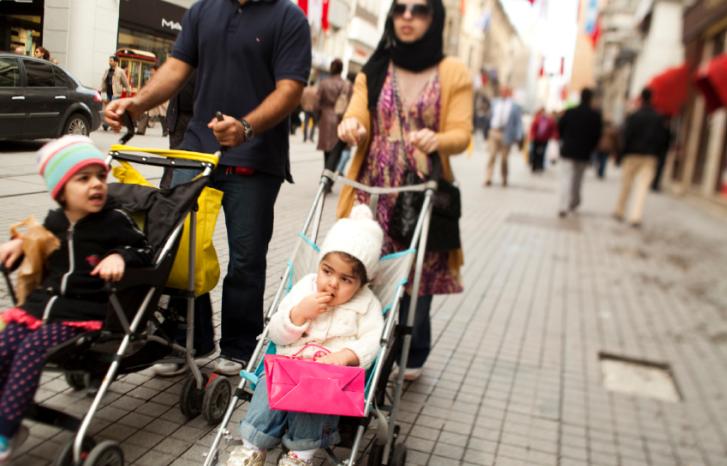Job opportunities. Financial independence. Access to care services outside the home. These are a few of the conditions that create good lives for women which are identified in the new book Gender and Well-being. The Role of Institutions. The book is part of the larger project Gender and Well-being which has been funded by the European Cooperation in Science and Technology (COST), and is based on a long-term collaboration between social researchers from 25 European countries who have compared the situation of women in the family, the market and the state.
“The challenges are solved in very different ways in the various countries, and there is a clear delineation between the Nordic welfare states and countries in Southern Europe,” says John Eriksen, a researcher at the Norwegian Social Research Institute (NOVA) and one of the book’s four editors.
Welfare state or private solutions
The major difference is the role played by the state. It is well known that the Nordic countries have comprehensive policies that enable women to combine paid work with caregiving duties. A large share of care for the elderly is handled by the public sector, and the vast majority of young children attend state-subsidized pre-schools. In the Southern European countries it is much more common for these caregiving tasks to be handled by the family or the private market - or in some cases by paid help in the home, often immigrant women who are living in the country illegally.
These differences have a notable impact: While most Nordic women both work and have children, their Southern European sisters must choose between a career and family. Many choose the first, and the result is rapidly declining birth rates.
Nordic countries are the ideal
According to Eriksen’s European research partners, birth rates will not rise again – and women will not achieve better lives – until the Southern European countries become more like the Nordic welfare states.

“For my colleagues in Spain and Italy, for instance, our welfare states are viewed as an absolute paradise for women and are definitively an ideal. However, it is not very likely that the Southern European countries will move in the direction of the Nordic model any time soon. On the contrary, we can anticipate the differences increasing due to the financial crisis,” says Eriksen.
“Rising unemployment will result in fewer job opportunities for women, and the financial situation will prevent the public sector from spending more money on care services,” he adds.
Critique of Nordic policy
Gender and Well-being. The Role of Institutions describes various aspects of women’s quality of life in a number of countries. And although the book generally holds up the Nordic welfare state as an example of a successful policy for women, it also presents a critical view of the Nordic model. In her chapter, the Danish researcher Anette Borchorst criticizes the policy that expressly aims to have as many people as possible in the work force and that links some benefits and rights to participation in paid work.
According to Borchorst, this goal of work for all has played a key role in Nordic policy, and it is rather a policy of coercion than a policy of rights. She points out that it cannot be taken for granted that paid work is crucial for well-being, and she adds a class perspective to the issue: Is work valued on the basis of middle-class jobs, which perhaps are generally more fulfilling and interesting than working-class jobs? Eriksen thinks this opposing view is timely, but he says it is difficult to get perspectives like these heard in the European researcher group.
“The Southern European researchers were not very interested in criticism of Nordic policy. The Nordic researchers’ critique of policies such as work for all probably does not seem very relevant when the major challenge in their own countries is to secure opportunities for women to work at all,” says the researcher.
See also: Why Norwegian birth rates are higher than in the rest of Europe
What is well-being?
The question of how the term “well-being” should be defined is a topic of debate, including among the researchers in this project. “Living conditions” is usually limited to measurable criteria such as income and access to health services and education, and “quality of life” is understood as a purely subjective assessment of one’s own life. Eriksen and his colleagues base their concept of well-being on a more normative theory of what constitutes a good life. They take their point of departure in the “capability approach”, which was developed by the Indian economist Amartya Sen and the U.S. philosopher Martha Nussbaum. In this approach, the measurement of well-being is linked to the opportunity of individuals to pursue their own goals.
“Rising above one’s own situation is an important criterion for Sen and Nussbaum. Awareness of the opportunities that are available outside of one’s own life is also considered to be an aspect of well-being. People easily reconcile themselves with the situation they are in and think that ‘life is good just as it is’. For these theoreticians, this in itself is not enough,” Eriksen explains.
But although he thinks that the capability approach is an inspiring way to think about what it means to live a good life, he acknowledges that it is a difficult question to study empirically.
“For example, we ended up keeping the opportunity to work as one measurement of the quality of women’s situation in various countries. But of course this is not indisputable,” the researcher admits.
Translated by Connie Stultz.
Gender and Well-being. The role of institutions is one of four sub-projects under the COST Action Gender and Well-being. The objective of the action has been to generate new insight into gender and living conditions, and the distribution of necessary goods in the EU.
Aktuelle lenker
John Eriksen is a sociologist and researcher emeritus at the Norwegian Social Research Institute (NOVA).



